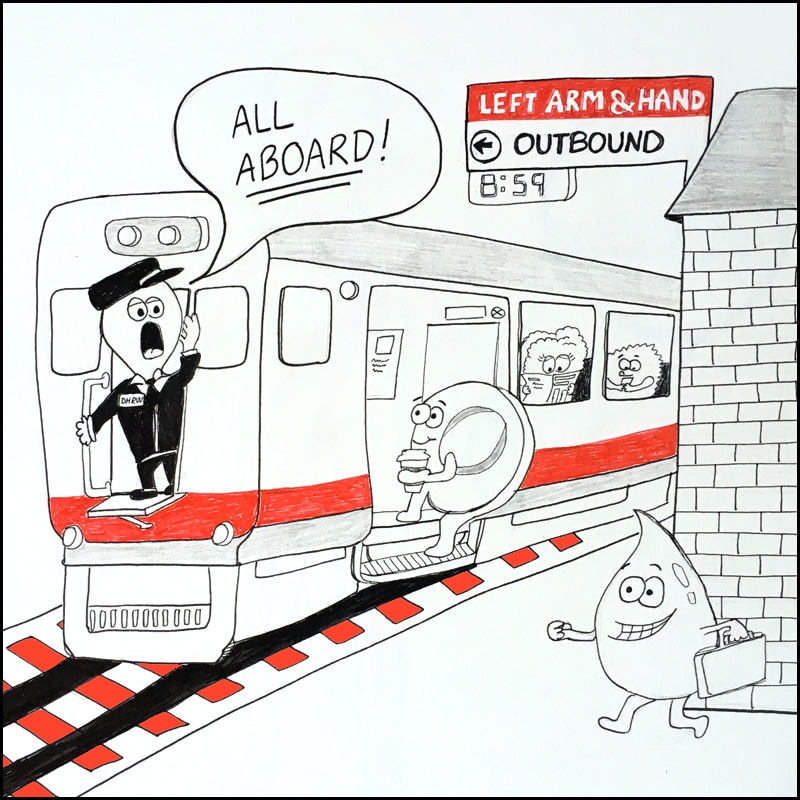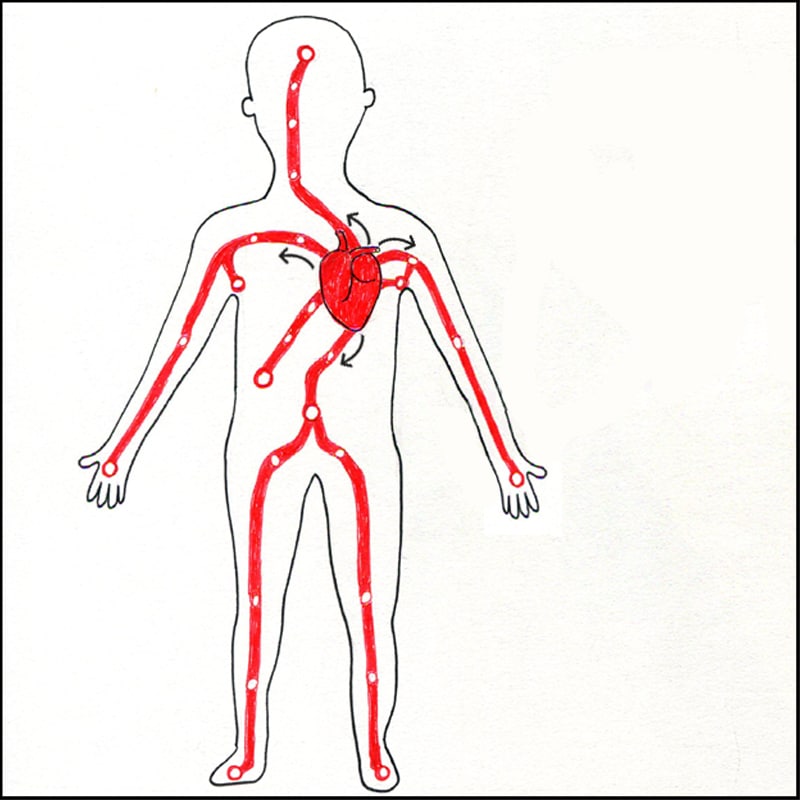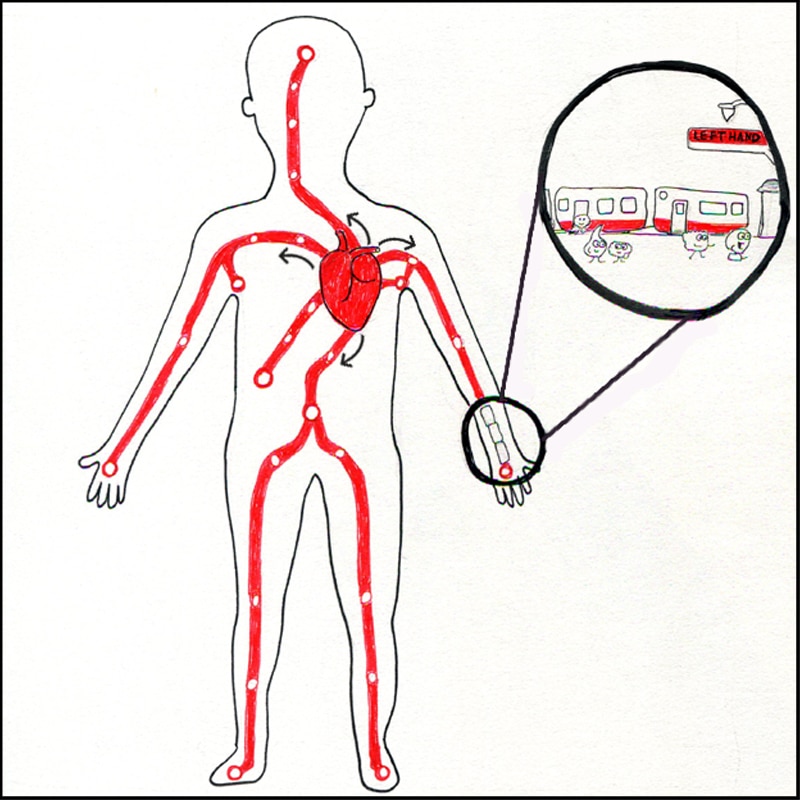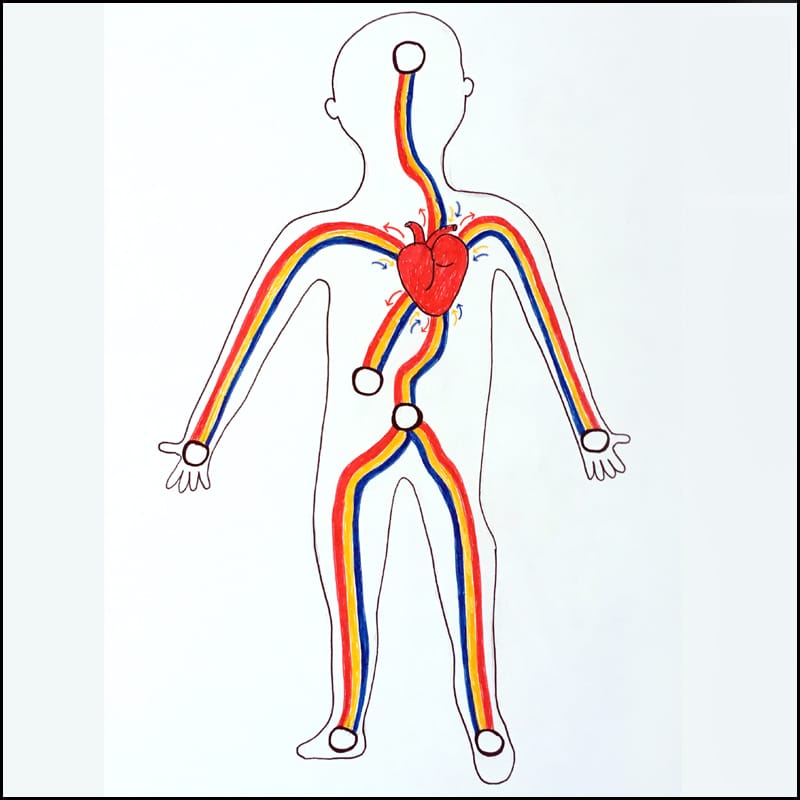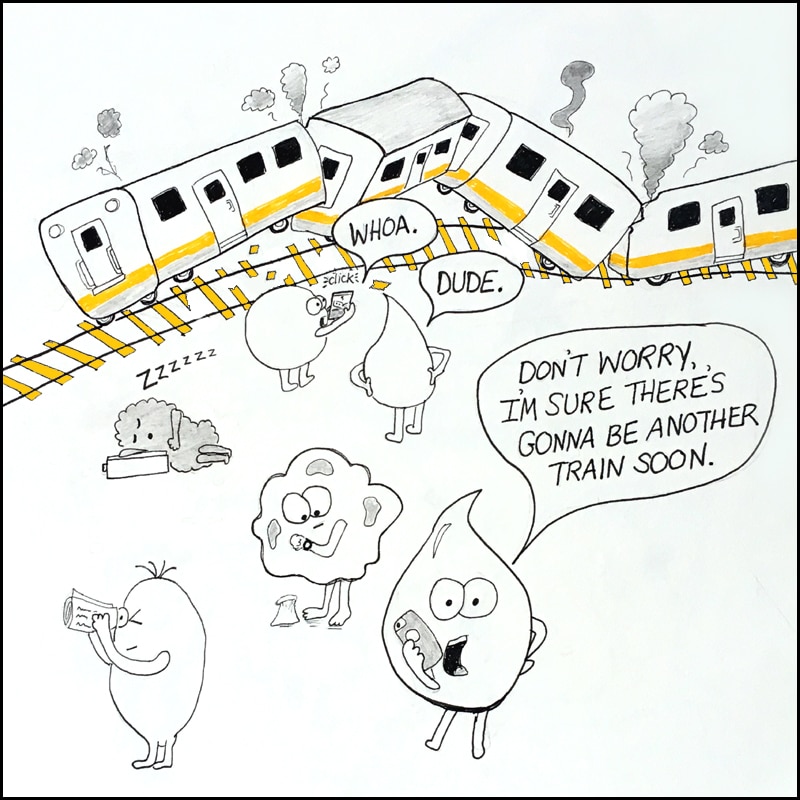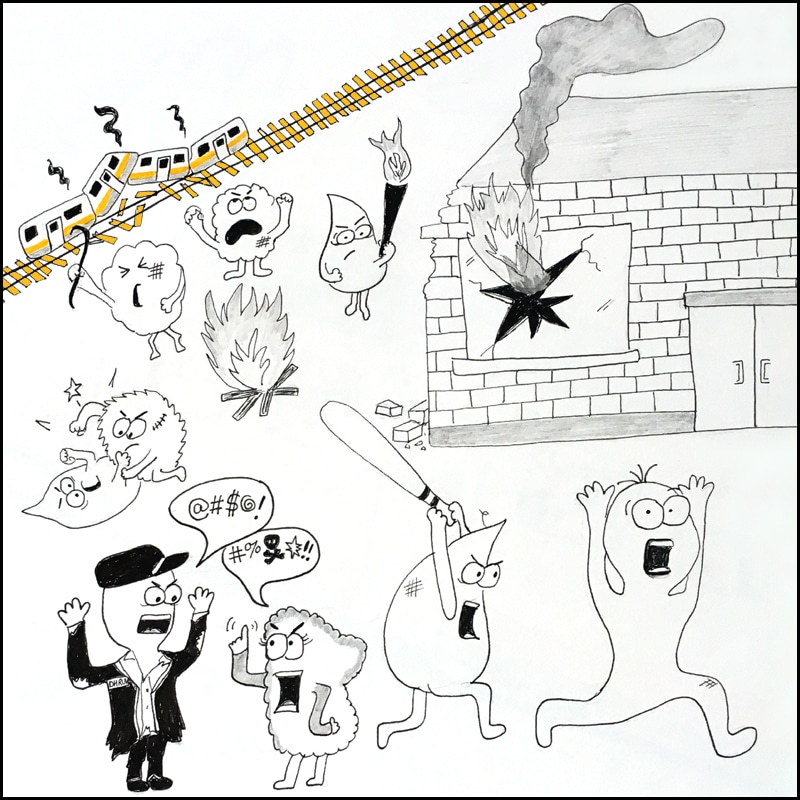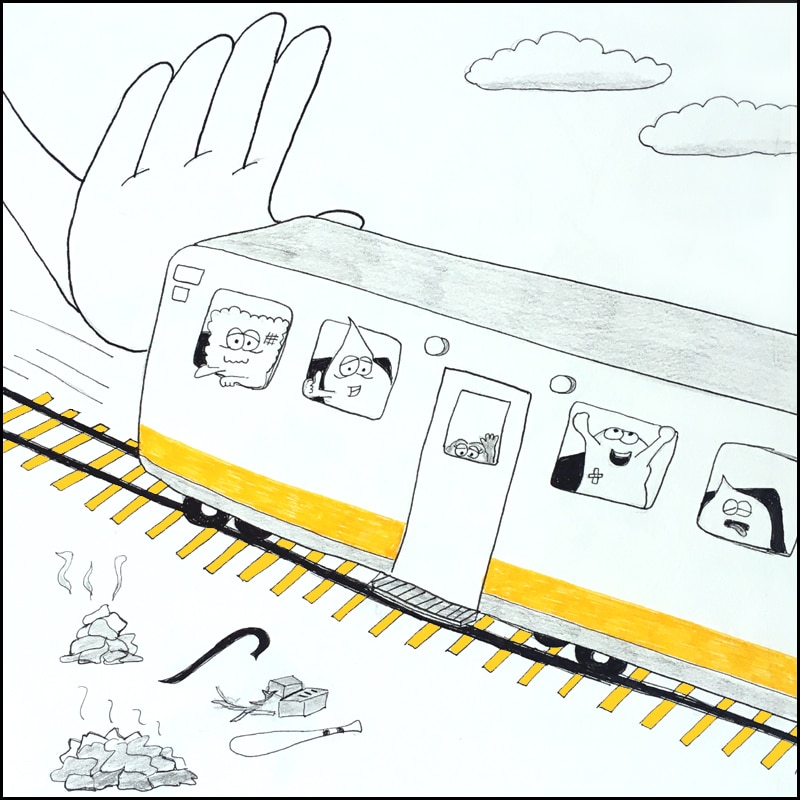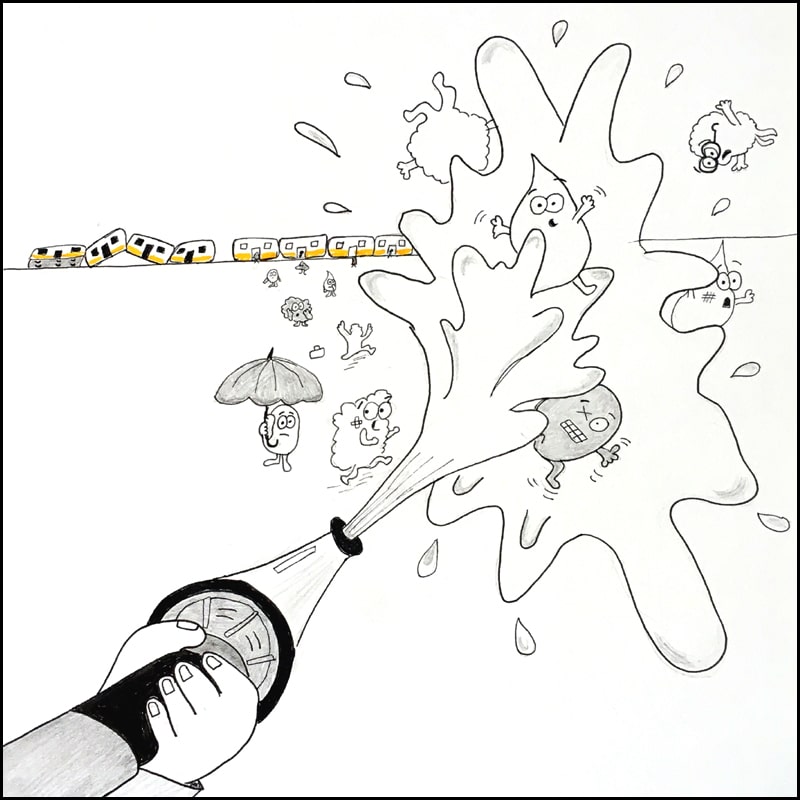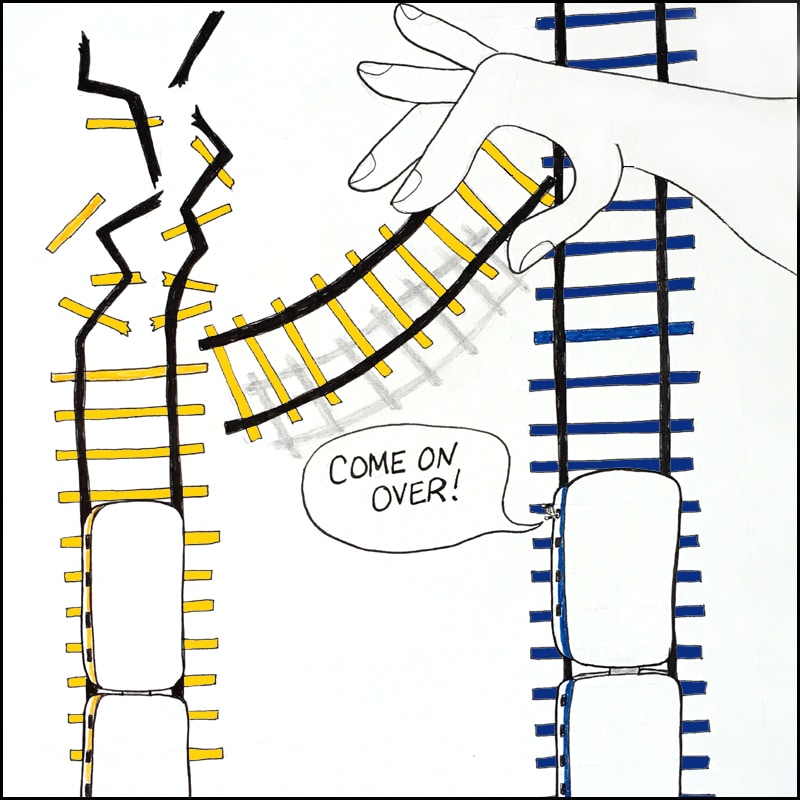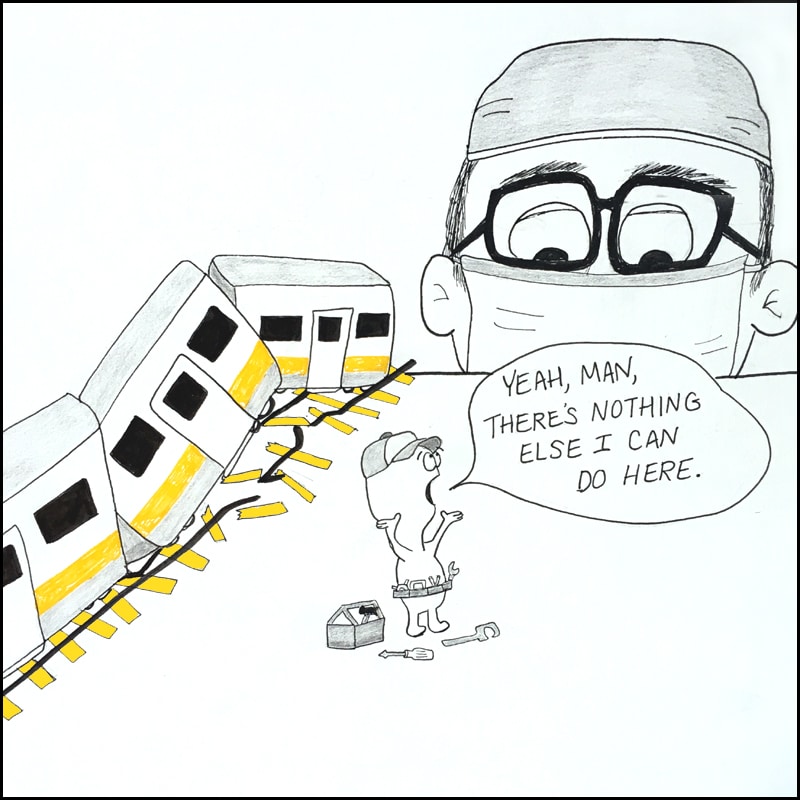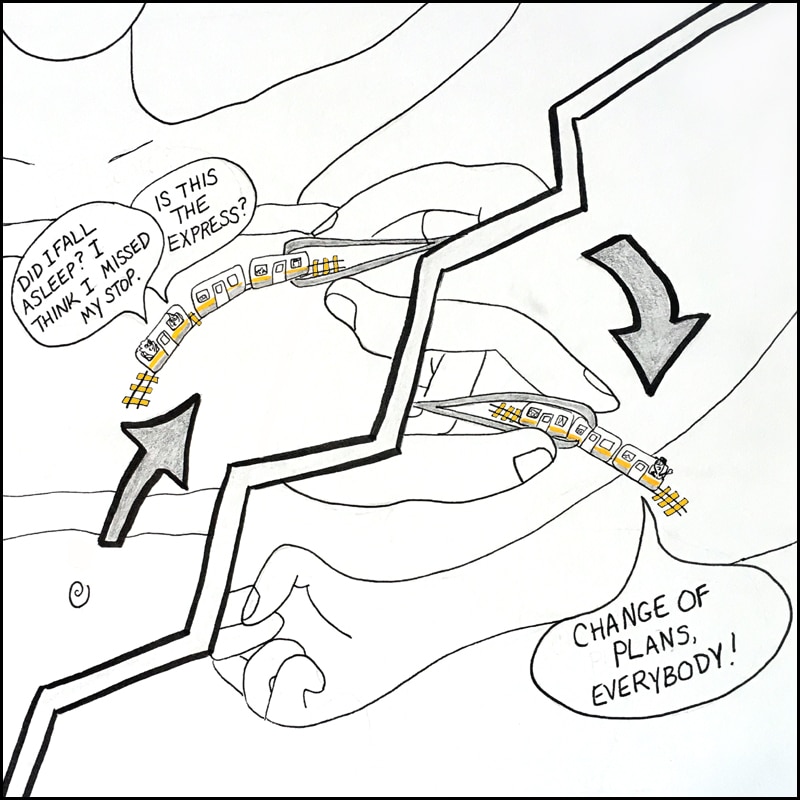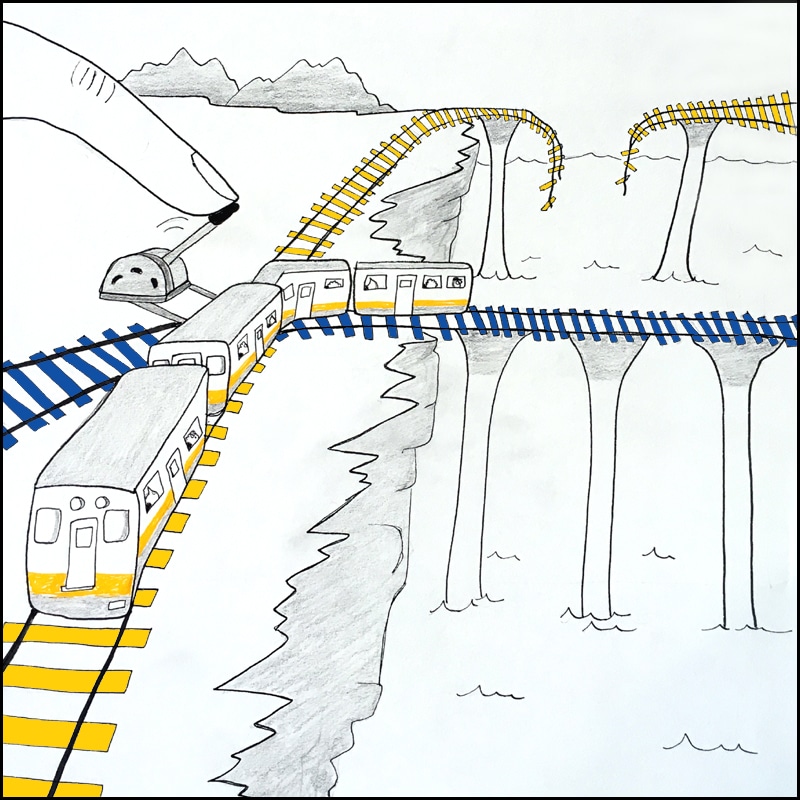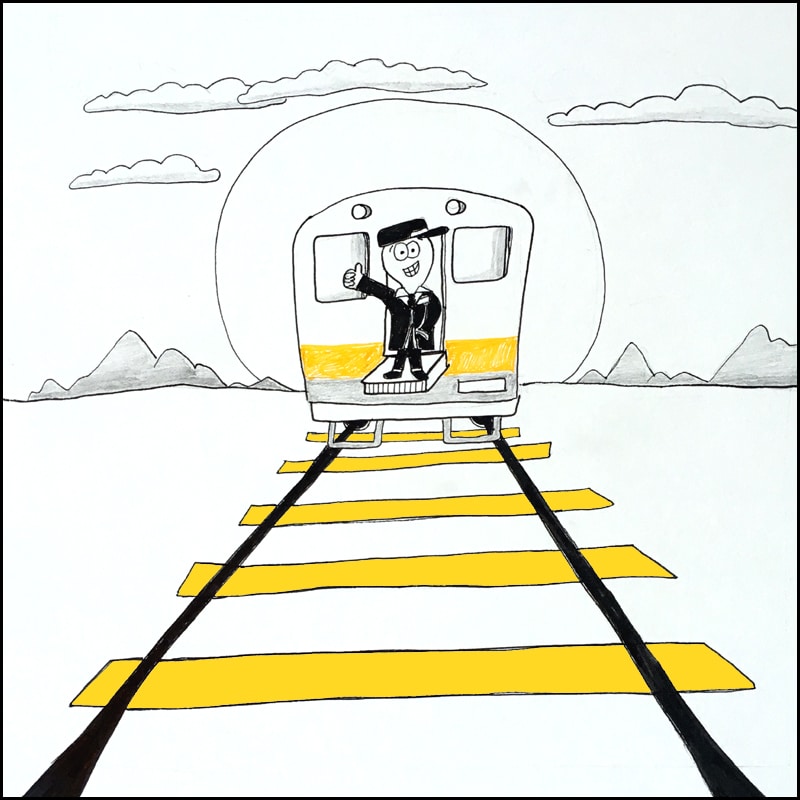I’d like to thank Dr. Dhruv Singhal, Director of Lymphatic Surgery at Beth Israel Deaconess Medical Center here in Boston, for sharing his brilliant “train” analogy for lymphedema and for his collaboration in making this latest cartoon happen.
Imagine your heart as the biggest train station in the world. There are red tracks with red trains running away from the heart and dedicated to areas all throughout your body. This represents your arterial system.
Let’s focus on one location in this analogy: the upper left extremity. Picture a workday, and at 9:00 in the morning, a big red train leaves the heart station, bound for the left arm and hand, and all the passengers get on board.
It makes its way down the left arm to the left hand, and the passengers get off at their various stops along the way and get to work. When the train gets to the end of the line, all of the passengers have gotten off.
At 5:00, it’s the end of the workday, and there are two sets of trains that will take the passengers home (to the heart) again: a blue train (the venous system) and the yellow train (the lymphatic system).
If everything is working well, the trains are on time and there are no problems, all the passengers get on their trains and get a seat, and they all get home on time.
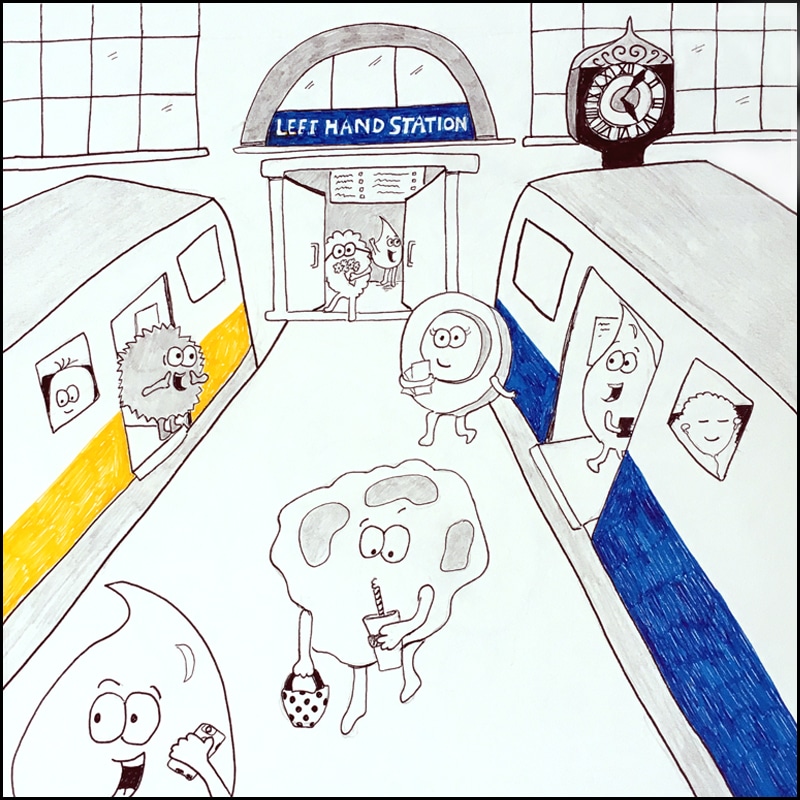
But what if one day, something goes wrong, and the yellow train gets derailed and the passengers get stranded? We’ve all missed a plane or train or bus sometimes, and usually we don’t make a big deal of it, so you might not even know you have any stranded passengers at all for a bit. They might be okay for a little while, waiting around for the next train to come and pick them up.
But what if someone told them “There is no other train coming,” and now they’re stranded for a long time, unable to get home, and just….stuck. They might get a little ticked off. And then they might start getting angry. And they might start to riot.
Those rioting passengers represent the symptoms of lymphedema that might be felt in the body – whether that’s fullness or heaviness or tingling or visible swelling.
So, what can be done when faced with this kind of scenario?
Lymphedema therapists who are doing decongestive therapy (which includes tools like manual lymphatic drainage and compression) can try to help push that yellow train up the track and get it back home. It’s the gold standard in lymphedema treatment, but it can take time and can be resource-heavy.
Excisional surgery procedures (such as debulking and liposuction), which remove excess mass, are like hosing down the rioters, eliminating those stranded passengers altogether.
This can be a great way to reduce the size of the extremity; however, it doesn’t fix the underlying problem. The train is still derailed, other trains are still running and getting stuck behind it, and those other passengers on later trains will end up stranded, too. Without lifelong, 24/7 compression after this kind of surgical procedure, the size reduction won’t be able to be maintained.
Microsurgery treatment options can work with the trains and tracks themselves to try to fix the fundamental problem with the goal of a better physiological outcome.
If the yellow train is trying to return to the heart station and the track is damaged, Lymphovenous Bypass (LVB) surgical procedures can connect the yellow track to a set of blue tracks and trick the yellow train into taking those blue tracks back home. The surgeon can connect the lymphatics to a nearby venous structure to create a new drainage pathway.
But there are times when a train might be beyond repair, and a whole new train and new set of tracks might be needed.
The surgeon might take a train (a lymph node) and some of the train tracks (the node’s afferent and efferent vessels) from a healthy, unaffected part of the body (a donor site) and implant it into the extremity that’s affected. They might take a train from the abdomen and place it in the forearm to help with upper-extremity lymphedema, and when that train gets into its new home, it starts to build its own new train tracks. This is known as Vascularized Lymph Node Transfer (VLNT).
And the exciting and hope-giving future of preventative surgery for lymphedema is that now, with the help of fluorescence imaging, a surgeon might be able to assess potential damage to the yellow train tracks down the line, and then re-route the yellow train onto its neighboring blue tracks BEFORE the yellow train has a chance to hit any trouble.
Whichever treatment option looks like the best fit, the overarching goal is to get that yellow train and its passengers back home and keep them as happy as possible.

